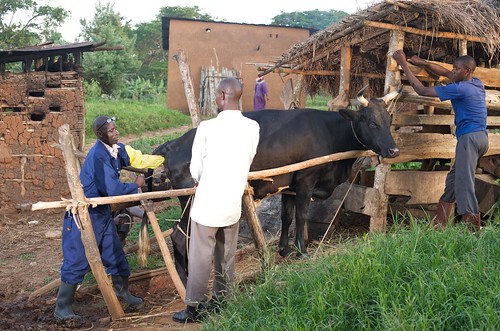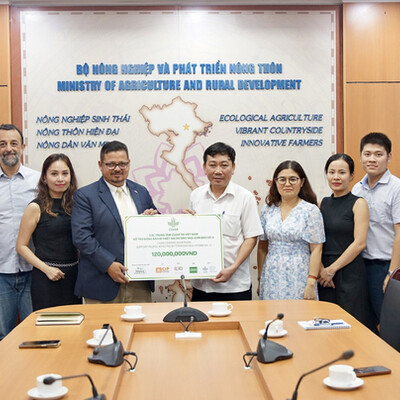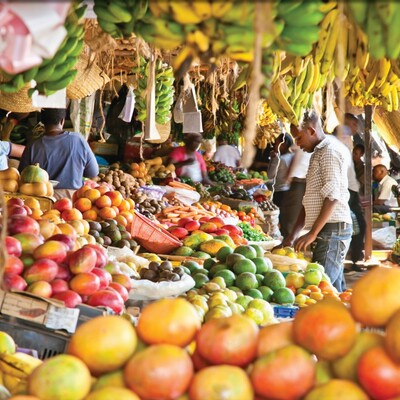
Smallholder farmers’ preferences for artificial insemination services through dairy hubs

Artificial insemination service in a smallholder dairy farm (photo credit: EADD).
Demand for animal products continues to outstrip production in most of sub-Saharan Africa. Efforts by countries to boost livestock production by means of breeding technologies like artificial insemination (AI) have been constrained by limited uptake, due to many factors. Using a choice experiment (CE) methodology, researchers from the International Livestock Research Institute, Justus-Liebig University of Giessen, Germany, and Charles Darwin University undertook a study to investigate which characteristics of AI services, offered through dairy hubs, farmers prefer.
The study was conducted in the western Kenya milk shed where the East African Dairy Development (EADD) project is employing the ‘dairy hub’ approach. Dairy hubs consist of milk chilling and/or bulking plants from which smallholder dairy farmers access bulk markets for the milk they produce as well as auxiliary services, such as AI, previously out of reach for many farmers.
The findings of the study, published in the Animal Journal, revealed that despite the observed decline in the demand for AI services in recent years, farmers are willing to use AI if the quality of the services is improved to match their preferences. The authors suggest that at the start, poor dairy farmers would be willing to accept basic services (lower quality AI), but as their income improves,, the farmers would seek better quality services.
A key conclusion is that collective action through farmer-led institutions, such as the hubs, can catalyse shifts in policy needed to increase farmers’ access to and use of AI and consequently improve breeds and performance. Farmer-friendly credit facilities such as check-off and flexible payment systems, could also constitute an important policy instrument for supporting continued diffusion of breeding services among smallholder dairy farms in sub-Saharan Africa.
The results of this study could be useful for development of a wider network of farmer-owned dairy hubs in the Kenya and help give farmers more control in their aspiration for increasing animal productivity.













